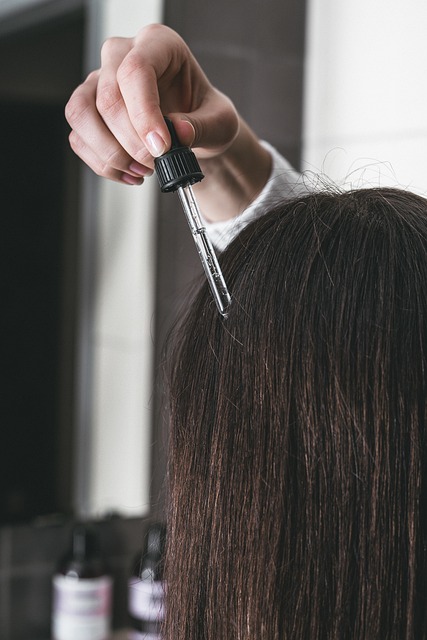The Art of Healthy Hair: Expert Tips for Gorgeous Locks
Achieving beautiful, healthy hair is a goal shared by many. Whether you're looking to enhance your natural texture, combat common hair issues, or simply maintain your locks in top condition, understanding proper hair care is essential. This comprehensive guide will explore expert tips and techniques to help you achieve the gorgeous, healthy hair you've always wanted.

Incorporating a weekly deep conditioning treatment can provide extra moisture and nutrients to your hair, especially if it’s dry or damaged. When drying your hair, opt for a microfiber towel or an old t-shirt to gently blot excess water, as regular towels can cause frizz and breakage. Finally, protect your hair while you sleep by using a silk or satin pillowcase, which reduces friction and helps maintain moisture.
How can I choose the right products for my hair type?
Selecting the appropriate hair care products is crucial for maintaining healthy locks. Consider your hair type (straight, wavy, curly, or coily) and any specific concerns you may have, such as dryness, oiliness, or color-treated hair. For fine hair, look for volumizing products that won’t weigh your hair down. Those with thick or coarse hair may benefit from heavier, more moisturizing formulas.
If you have color-treated hair, opt for products specifically designed to protect and maintain your color. For those with curly or coily hair, look for products that provide ample hydration and definition. Always read ingredient lists and avoid harsh chemicals like sulfates, parabens, and alcohol, which can strip and dry out your hair.
What role does nutrition play in hair health?
A balanced diet rich in vitamins and minerals is essential for maintaining healthy hair from the inside out. Protein is particularly important, as hair is primarily made of protein. Include lean meats, fish, eggs, and plant-based protein sources in your diet. Omega-3 fatty acids, found in fish, nuts, and seeds, can help nourish your scalp and promote shine.
Vitamins A, C, and E are crucial for hair growth and overall health. Incorporate plenty of colorful fruits and vegetables into your meals. Biotin, a B-vitamin, is often touted for its hair-strengthening properties. While you can find biotin supplements, it’s best to consult with a healthcare professional before starting any new supplement regimen.
How can I protect my hair from heat damage?
Heat styling tools like flat irons, curling wands, and blow dryers can cause significant damage to your hair if used improperly. Always use a heat protectant product before applying any heat to your hair. These products create a barrier between your hair and the heat, reducing damage and helping to maintain moisture.
When using heat tools, opt for the lowest effective temperature setting. Fine or damaged hair may only require 300°F, while thicker hair types might need up to 380°F. Avoid using heat tools daily, and try to incorporate heat-free styling methods into your routine. When blow-drying, use the cool setting to finish your style, as this helps seal the hair cuticle and add shine.
What should I know about professional hair care treatments?
Professional hair care treatments can provide targeted solutions for various hair concerns. Regular trims at a salon are essential for maintaining healthy hair and preventing split ends. Depending on your hair type and growth rate, aim for a trim every 6-8 weeks.
| Treatment | Purpose | Frequency |
|---|---|---|
| Deep Conditioning | Intense hydration and repair | Every 1-2 weeks |
| Keratin Treatment | Smoothing and frizz reduction | Every 3-5 months |
| Hair Gloss | Adds shine and enhances color | Every 4-6 weeks |
| Scalp Treatment | Promotes healthy hair growth | Monthly |
| Protein Treatment | Strengthens damaged hair | Every 4-6 weeks |
Prices, rates, or cost estimates mentioned in this article are based on the latest available information but may change over time. Independent research is advised before making financial decisions.
When considering professional treatments, consult with a licensed stylist to determine the best options for your hair type and concerns. Some treatments, like keratin smoothing or chemical straightening, may require special aftercare to maintain results and prevent damage.
How can I address common hair concerns?
Many people struggle with common hair issues such as dryness, frizz, or thinning. For dry hair, focus on hydrating products and limit washing to prevent stripping natural oils. Combat frizz by using anti-humidity products and avoiding towel-drying. If you’re concerned about thinning hair, consult with a dermatologist to rule out any underlying health issues and explore treatment options like minoxidil or scalp treatments.
For those dealing with an oily scalp, try using a clarifying shampoo once a week and focus conditioner only on the ends of your hair. If dandruff is an issue, look for shampoos containing ingredients like zinc pyrithione or ketoconazole. Remember that healthy hair starts with a healthy scalp, so don’t neglect proper scalp care in your routine.
In conclusion, achieving and maintaining healthy, beautiful hair requires a combination of proper care techniques, the right products, and a healthy lifestyle. By following these expert tips and tailoring them to your specific hair type and concerns, you can develop a hair care routine that leads to gorgeous, manageable locks. Remember that consistency is key, and it may take some time to see significant improvements in your hair’s health and appearance.






